Comparative overview of popular five-inch smartphones Xiaomi Redmi 4 and Redmi 3S are the best in their class (and not only in it) in terms of price / quality ratio.
Introduction ≈
2016 was rich in announcements of various mobile devices, especially, in my opinion, Xiaomi has distinguished itself by releasing a whole bunch of new mobile solutions to the existing models. Varying various parameters of the components - processor, memory, display, battery and camera, the company presented more than 25 (!) Different modifications of its new smartphones - Redmi 3, Redmi 4, Redmi Note 4, Redmi Pro, Mi5, Mi Note 2 and Mi Mix.
In this variety, it is easy to get confused, because in order to understand how, for example, the Redmi 3, Redmi 3 Pro, Redmi 3S, Redmi 3X or Redmi 4 models differ from each other from Redmi 4A and Redmi 4 Pro, you need to at least know, that the above modifications exist. But our person is not so easy to take with diversity, and the people gradually figured out what was what, having determined for themselves leaders in each of the market segments.
In the budget segment, these leaders are the twin brothers Redmi 3 Pro and Redmi 3S, which have absolutely no budget characteristics, which at the time of release by other manufacturers were installed in the model of the middle price range - these are quite nimble processors (both central and graphic), and a metal case, and powerful battery, and finally, a fast fingerprint scanner. However, all this was in the first half of the year, so in order to maintain its position in the market, in the second half of the year the company introduced the Xiaomi Redmi 4 line in the budget segment, consisting of Redmi 4 and 4A models. In turn, the Redmi 4 model was divided into modifications "regular" and "pro" (the suffix "Prime" is also found due to the large amount of on-board memory), which differ between the main and graphic processors (Snapdragon 430/625, Adreno 505/506 ) and the amount of RAM (2/3 GB) and flash memory (16/32 GB).
That's about the "professional" version of Redmi 4 (in the photo - above) and its comparison with the "popular" Redmi 3S (below) and will be discussed further.
Contents of delivery ≈
Phone supplied Redmi 4 Pro(or simply Redmi 4 in the future) in the standard configuration for Xiaomi - a strong cardboard box, in it the smartphone itself, Charger to it (5 volts / 2 amperes) in the format Type A (American socket without grounding), micro USB-cable, pin for removing the tray for SIM-cards and a set of paper documentation in English.
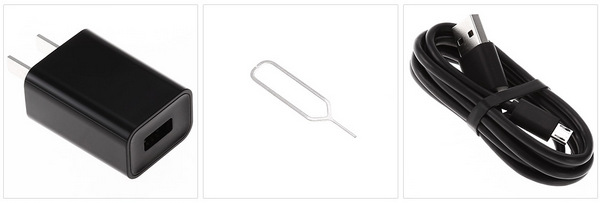
The color scheme of the models is presented in gray, silver and gold colors:
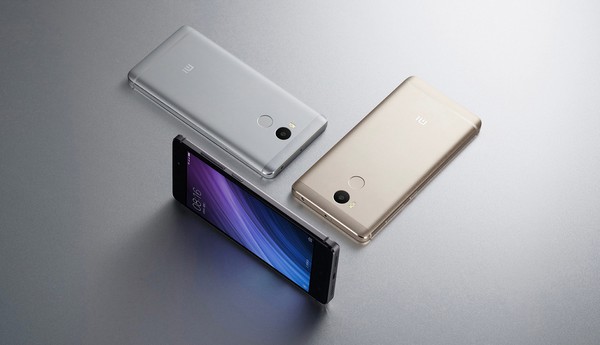
Immediately, we note that the front panel in the off state creates the effect that the phone is devoid of frames. But when turned on, the effect disappears, since the outline of the black frames is clearly traced. And only the modification of the phone in dark gray color (Gray), due to the color of the case, visually looks like frameless and in the switched on state. That is why prices for this model differ depending on the color of the case.
Appearance and ergonomics ≈
The device has a solid looking metal case made of aluminum alloy, and only on the top on the rear surface there is a thin composite insert for better signal reception by the antenna. Unlike Redmi 3S, the body of which has a back surface that smoothly merges into the side edges, the Redmi 4 has pronounced side edges. They, in turn, have a bevel, which organically complements the glass in the 2.5D form factor. This is a fashionable trend in smartphone building on the one hand, adds grace to appearance apparatus, on the other hand, it does not allow sticking safety glass/ film flush so that it is not visible. This should be taken into account for those who are used to additionally protecting their devices. In the photo below, Redmi 4 is at the top, Redmi 3S is at the bottom.
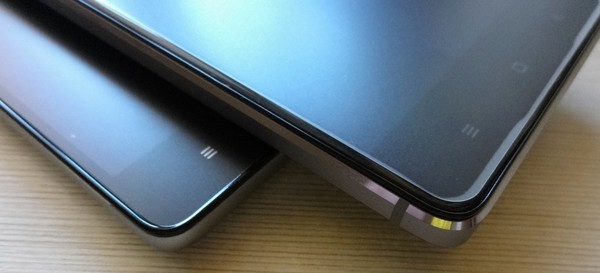
The quality of the phone's workmanship the highest level- don't look that the company positions him as a top model budget segment... We will return to the positioning issue later, but for now we can simply say that the phone does not look budget-friendly at all.
On the front side of the phone, there is a light sensor, a front camera, an earpiece and an indicator to notify the user about various events in his hectic smartphone life. Below are located touch buttons: application menu, home and back(from left to right). Unfortunately, the buttons are not backlit. For a visual comparison of sizes, in the photo Redmi 4 is on the left, Redmi 3S is on the right:
![]()
The back of the phone bears the company's logo, main camera, dual dual-band flash (only for Redmi 4) and a fast-response high-quality fingerprint sensor. Redmi 4 Pro - left, Redmi 3S - right:
![]()
The top face has a standard jack (3.5 mm) for headphones, an infrared port for control household appliances and an auxiliary microphone for noise cancellation.
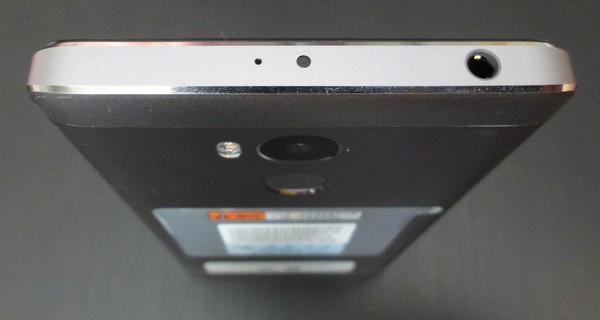
The bottom edge has a hole for the speaker, which is located on the right, and the microphone, which is located on the left. In the center there is a MicroUSB connector for charging or connecting devices via an OTG cable. Here I would immediately like to note an improvement in comparison with Redmi 3S in the form of a speaker, which has moved from the back to the end of the phone - now, when the phone is lying on some surface, say a table, the speaker produces a cleaner and louder sound.
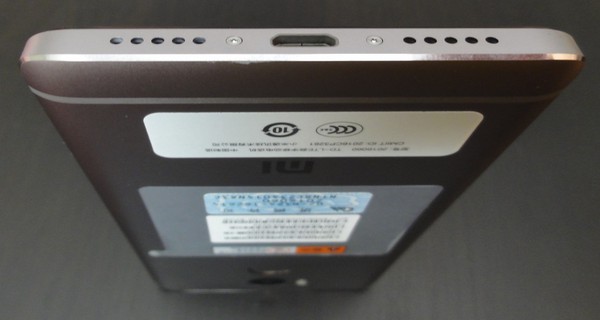
On the left side there is a hybrid tray for micro- and nanoSIM SIM cards, and instead of nanoSIM, you can insert a microSD card, thus obtaining a smartphone with one SIM card and an additional memory card. The tray is fixed in the body tightly and is taken out with a special hairpin, which is supplied with the phone. If desired, the pin can be replaced with a regular thick needle or even a paper clip.

The opposite right side has a volume rocker button and a power button for the phone. The buttons are quite resilient, one might even say a little stiff, but they do not cause any inconvenience when pressed either directly on the phone or through the case.

Specifications ≈
- Qualcomm processor Snapdragon 625 up to 2.0 GHz;
- graphics processor Adreno 506 with a frequency of up to 650 MHz;
- memory ( ROM +
- front camera 5 megapixels, aperture F / 2.2, face detection, fixed focus;
- rear camera 13 megapixels; aperture F / 2.2, panorama, HDR, face detection, flash and autofocus;
- MicroUSB support;
- support for microSD cards up to 128 GB;
- built-in 4000/4100 mAh battery;
- presence of sensors: accelerometer (G-sensor), light sensor, gyroscope and others;
- weight - 156 grams;
- dimensions 141.3 x 69.6 x 8.9 mm.
For the Redmi 3S model, which will be compared, the technical specifications that differ from the older model will be as follows:
- CPU Qualcomm Snapdragon 430 up to 1.4 GHz;
- GPU Adreno 505 with a frequency of up to 450 MHz;
- rear camera 13 megapixels; aperture F / 2.0;
- weight - 144 grams;
- dimensions 139.3 x 69.6 x 8.5 mm.
Today I will tell you about another budget smartphone from the Redmi series from Xiaomi. This line is updated at a breakneck pace. Someone thinks this is bad. Some, on the contrary, support such diversity. But we are not going to discuss the work of Xiaomi marketers right now. Just consider another novelty, which received the name Redmi 4X and has all the makings and prospects of becoming a new people's smartphone.
DELIVERY PACKAGE AND DESIGN
Package without surprises:
- Z / y unit for 5V and 2A,
- USB-microUSB cable,
- a paper clip to open the tray,
- an adapter for our sockets from the seller.
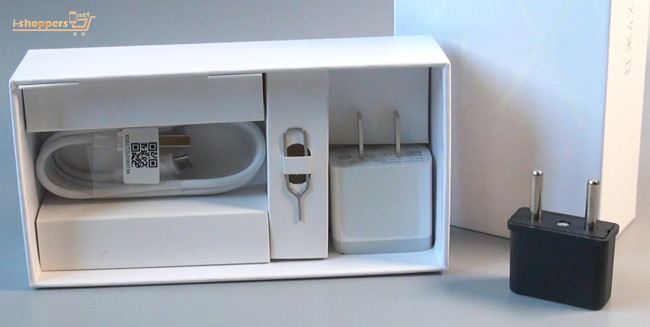
I have a smartphone in black, which this manufacturer has paid little attention to before. The color is classic and very popular, so the decision to release black smartphones is definitely the right one.
In terms of design, Xiaomi Redmi 4X is a cross between and ordinary. It has the same rounded shape as 4A and the same camera and flash placement. But if the 4A is completely plastic, then the 4X received a metal case with two plastic inserts on the top and bottom. In addition, the 4X has a fingerprint scanner.
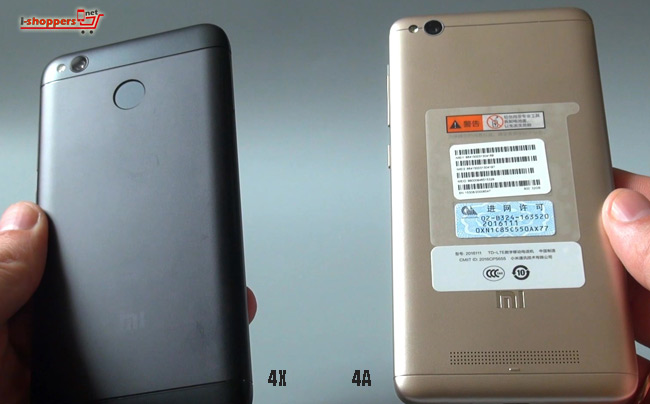
The 4X model differs from the usual Redmi 4 (in the photo below the Pro version) in more rounded shapes, the location of the camera and flash, and also less metal - as you remember, in Redmi 4 and 4 Pro plastic is only available in the form of a narrow upper insert. What's better? - a matter of personal preference. For example, I like the Quartet design more, because it is more strict and looks somehow more serious. Again, this is purely subjective. But in terms of ergonomics, the 4X is more convenient.

The front panel in this color is black and covered with glass with rounded edges, which makes the glass seem to protrude slightly from the body.
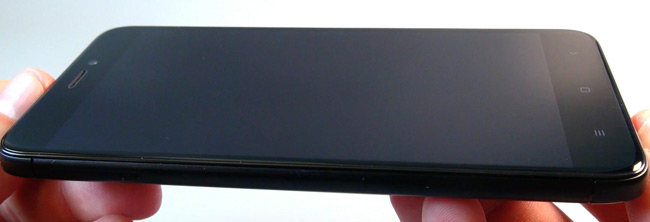
The width of the side frames is quite adequate - 2 mm. In pink and gold, the front panel is white and there, too, the frames are not particularly straining, unlike the Redmi 4 of the first batches. Also note that the event indication LED is located under the "Home" button, as it was in the old Redmi 3. The diode is one-color and signals only in white.

Traditionally, on the right we have metal and non-playable power and volume buttons. On the left we have a combined tray with support for either two micro + nano SIM cards, or one SIM + memory card.
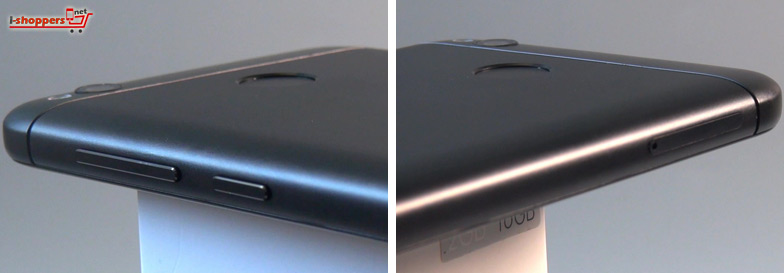
On the top there is an audio jack, an infrared port and an additional microphone. On the bottom edge of the case we have a microUSB connector and two perforation zones for a speaker and a spoken microphone.

As for the build quality, I have no reason to find fault with it. Plastic inserts do not make any sound when pressed. Ergonomics are also great - the Redmi 4X lies in the hand even better than my Redmi 4 Pro due to smoother body lines and a slightly more compact size. Yes, 4X is slightly shorter in length. The dimensions are as follows: length 139 mm, width 69 mm and thickness 8.7 mm. The novelty weighs 148 g.
DISPLAY, HARDWARE, SOFTWARE
In principle, the redesigned design is the main difference between Redmi 4X and Redmi 4 or from. The rest is, in fact, little things. There is still a decent 5-inch screen with HD resolution, no air gap and 10-touch multi-touch. There is an oleophobic coating on the glass.
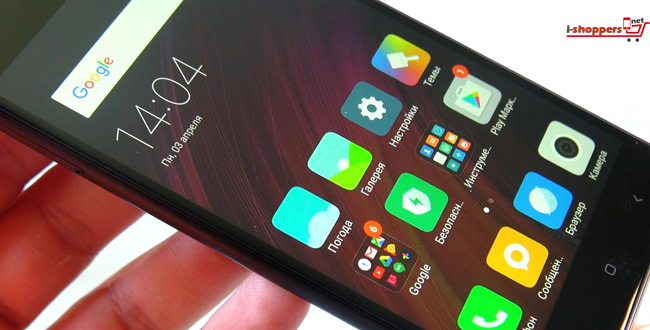
Yes, 4X got 8-core Snapdragon processor 435, and the 430th "dragon" was installed in Redmi 4 and 3S. But they do not differ in performance, and the graphics accelerator is still the same - Adreno 505. The main and only difference between Snapdragon 435 and 430 is an improved modem, which gives more high speeds in 4G networks. The rest is the same.
Xiaomi Redmi 4X came out in two versions, which traditionally differ from each other in memory reserves. I have the youngest on my review and he got 2 GB of RAM and 16 GB of internal memory, of which 9 GB and more are available. But remember that if necessary, we can install a microSD card in one of the slots. The older 4X is endowed with 3 GB of RAM, has a 32 GB drive and, of course, a higher price tag. Is 2 GB of RAM enough for comfortable work? In general, this will be enough for most people. But for active users who are used to opening many tabs in the browser and simultaneously launching several applications, switching between them, it is advisable to have a margin of 3 GB.
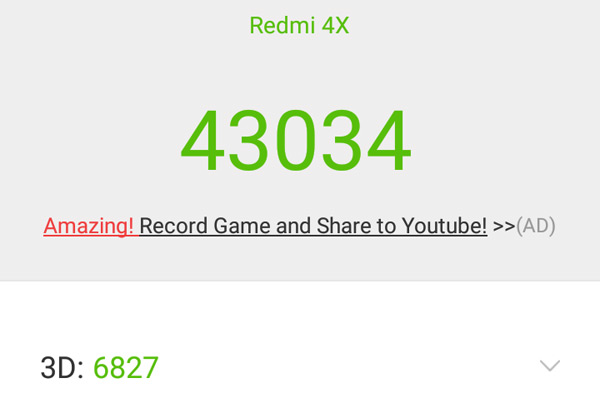
In the AnTuTu test, the novelty is gaining in the range of 42-43 thousand points. This is the level of performance that will be enough for almost anything. Since we have an HD display, the load on the video chip is not high in games. You can safely drive into tanks on medium graphics settings without disabling HD textures and shadows. That is, a full-fledged average graphics in game WOT BLITZ smartphone pulls. Even at maximum speed, you can try to fight, but, let's say, conditionally - there will already be problems with the frame rate in action scenes and on certain maps.
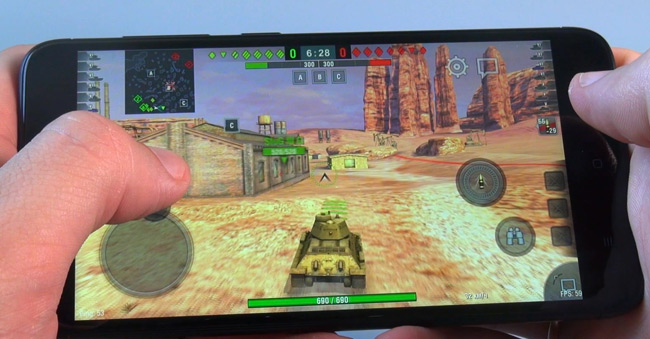
Like any other smartphone from this brand, Redmi 4X received the proprietary MIUI 8th version interface on Android base 6.0. As I understand it, having studied the topic of a smartphone on the w3bsit3-dns.com forum, the official global firmware not yet available for this model. But this does not matter, because now almost all stores send 4X with a stable multilingual MIUI firmware Global version 8.2.0.2 (MAMMIEA). Judging by the set of letters in brackets, this is an unofficial custom, although it is written Global Stable. Many sellers on Aliexpress call this firmware the official global. In fact, this is not the case. The firmware works stably, translation into Russian is almost complete, there is a Market and ordinary user you don't have to reflash something and dance with a tambourine. The smartphone is completely usable out of the box.
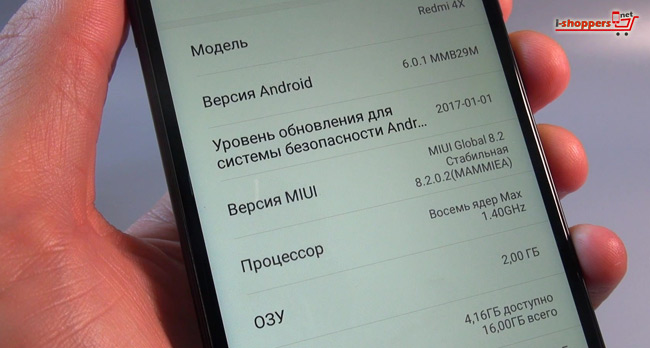
CAMERAS
The main camera received a 13-megapixel Samsung S5K3L8 sensor - the same as in Redmi 4 Pro and Redmi 3S. In this case, the aperture of the optics here is F / 2.0. The situation with the quality of the photo is the same as in the case of its predecessors: in the daytime it shoots well, with a lack of light it is not very good. Well, there is also a lack of image stabilization, at least the most primitive.
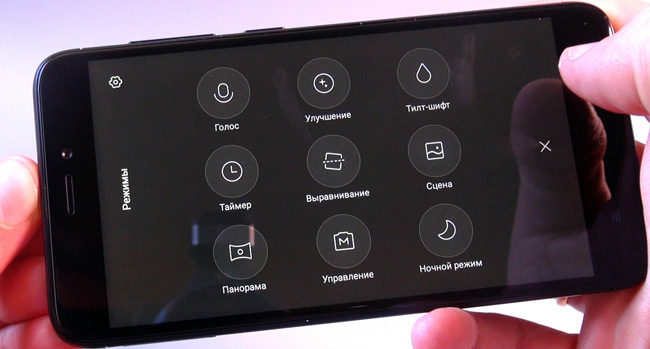
Let's compare 4X and 4 Pro cameras in a well-lit room. 4 Pro gives more saturated color and the photo from it at first glance seems to be more contrasting.
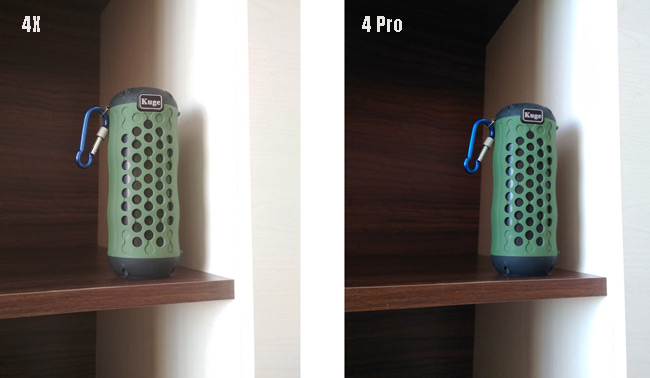
But on the crop, you can see that the Redmi 4X still retains more details. The difference is small, but it is, and probably the faster F / 2.0 optics played a role here. After all, the sensors themselves are the same. Let me remind you that in Redmi 4 Pro optics F / 2.2
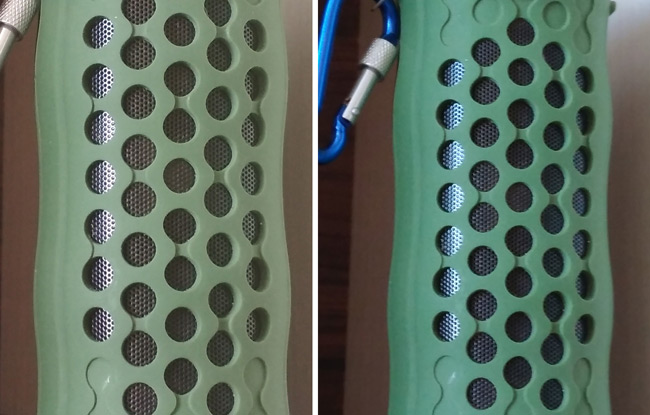
Video filming, as always, is possible in FullHD resolution, but it must be set in the settings. HD video is active by default. The frame rate is 30 per second and, by tradition, the sound is recorded very well.
A 5 MP front camera with an OmniVision 5675 sensor. A normal front camera and there is nothing to add here.
OTHER FUNCTIONAL
Otherwise, stability and positiveness, and we have long been accustomed to this in the case of smartphones of the Redmi series. Full operability of all modules. The quality of the spoken microphone and earpiece is normal. Smart GPS with GLONASS support. The presence of a gyroscope. Not bad sound for a budget employee in headphones and, as always, a loud and good quality external speaker.
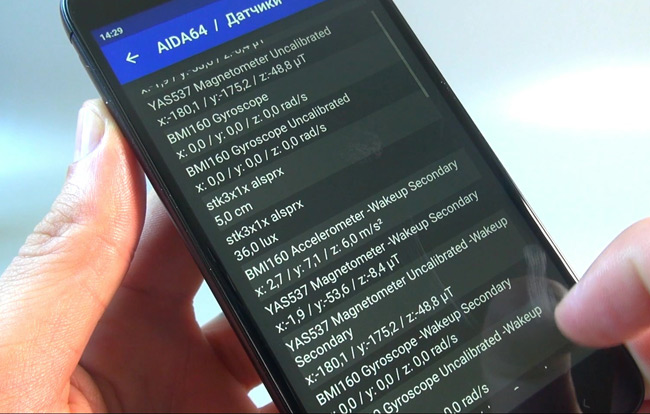
3G networks will work in any region. Support for 4G networks is also generally in order, except perhaps the 20th Band. Smart can work on band 1,3,5,7,38,39,40 and 41.
AUTONOMY
That's why, but for the battery, I have always respected the Redmi line. As usual, a capacious 4100 mAh battery is hidden in a relatively small body. Yes, the processor is not that energy efficient here, but with such a battery this is not a problem. In standby mode with a SIM card, no more than 2% of the charge is consumed per night. When watching videos on YouTube with an average brightness of the backlight, you can expect a consumption in the region of 8-9% of the charge per hour. These are just gorgeous indicators. Even the most active users will have enough autonomy for the whole day. And for most people, the charge will last for 2, and for some, for 3 days. The smartphone is fully charged in 2 hours 45 minutes. And with such a capacious battery, this is a good speed.
In Russia at a price of 12,990 rubles. Against the background of previous models in the line, this device has not received wide recognition, although the same Redmi 4, which is more popular, is in no way inferior. You can evaluate the few differences between them using the example of a detailed comparison.
Design
Xiaomi Redmi 4X and Redmi 4 are almost identical in body size, but their design is different. The first is more like Redmi3S, it has the same plastic inserts on the top and bottom, and the camera is located in the corner.
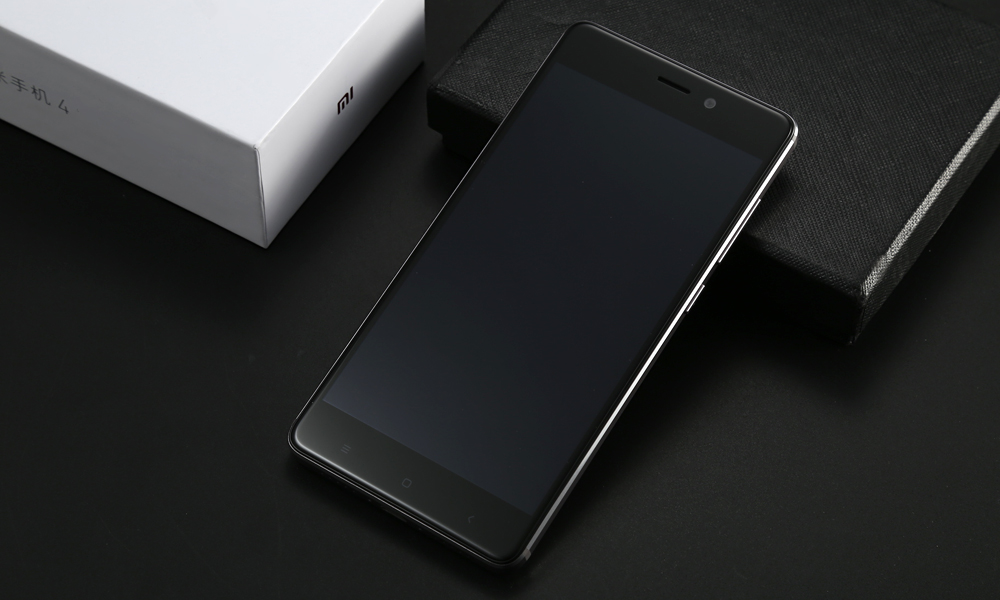
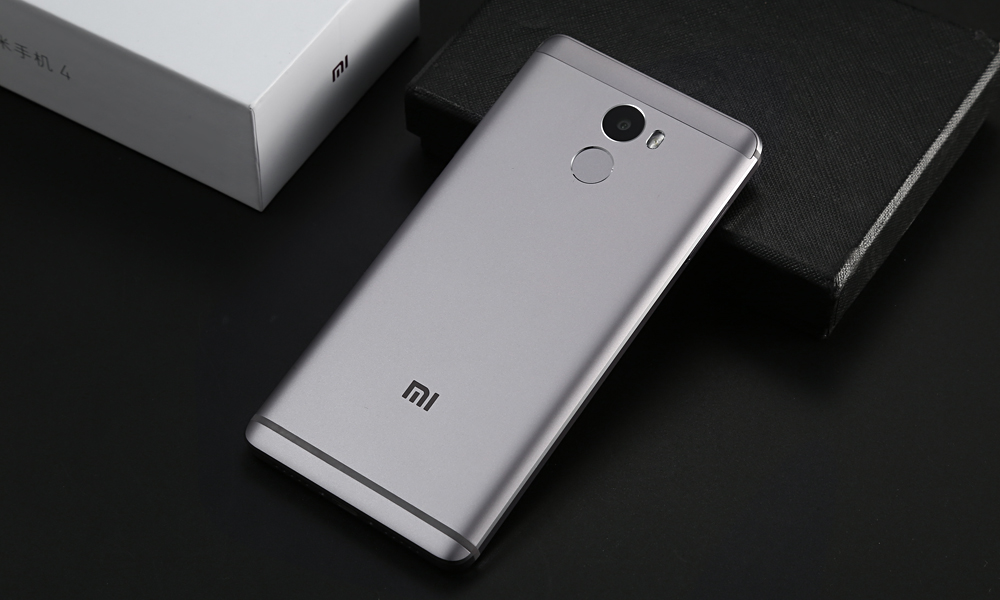
The usual Redmi 4 has a more modern design and the body is almost entirely made of metal, with plastic only on top. The camera is centered right above the fingerprint scanner.
Many Redmi 4 looks much more attractive, although the Redmi 4X also has its own chips. For example, this module is available in the now popular black color. This option, by the way, is available in Russian retail. Pink is not officially shipping yet.
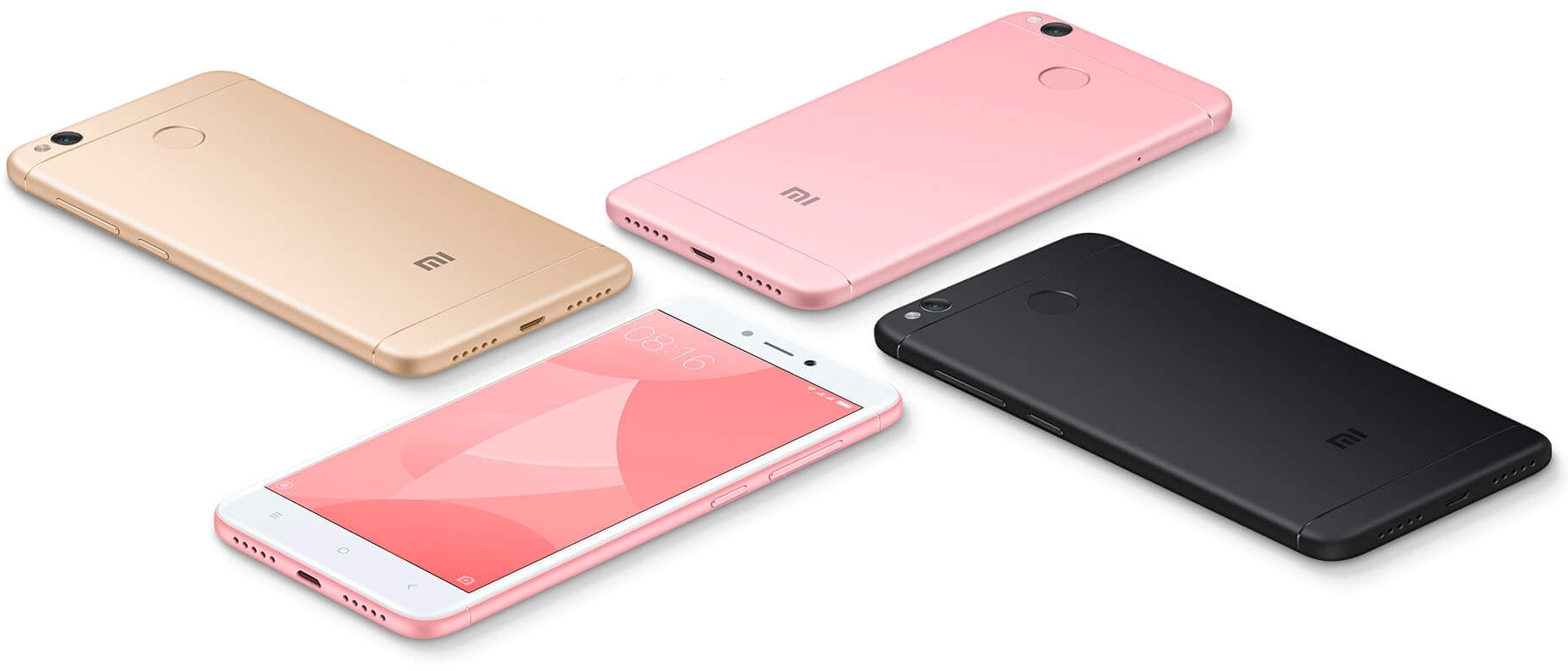
Screen
From the front, both models are very similar, especially when looking at their darker versions, each with a black front. All the differences are only in the more rounded body of the Redmi 4X. In theory, this makes it a little more comfortable, although with 5-inch displays, both smartphones should fit perfectly in the hand.
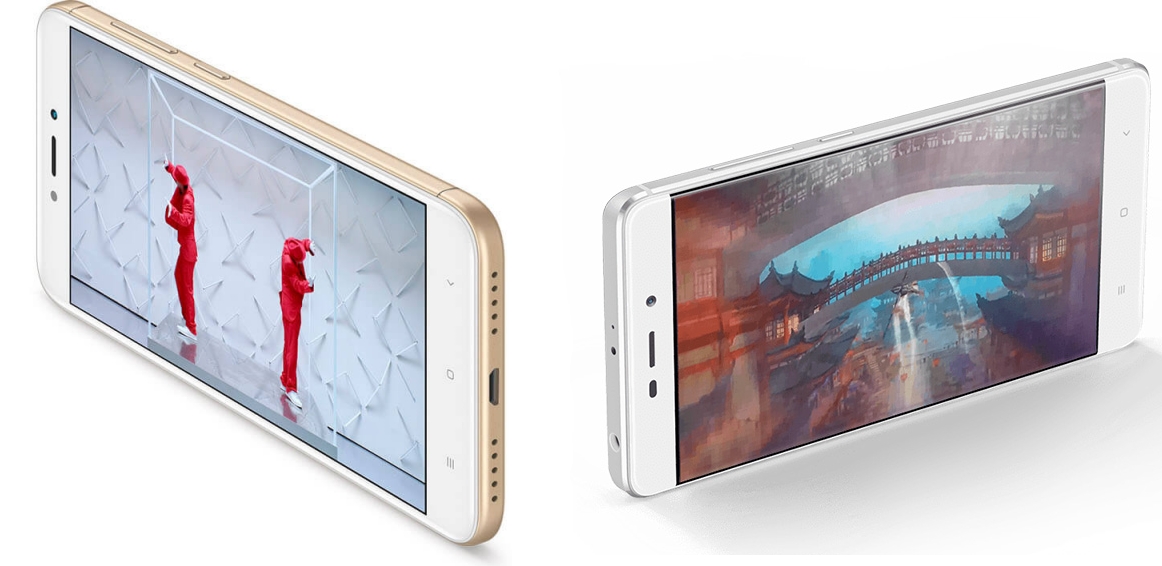
They have the same screen resolution, 1280x720 pixels. Only Redmi 4 Pro has a big one in the line, but due to more powerful processor this smartphone cannot be put on a par with Redmi 4 / 4X at all. These are really different levels.
Performance
Smartphones formally have different processors: Redmi 4X has Snapdragon 435, and Redmi 4 - Snapdragon 430. In fact, this is the same chip, but in the first case it is supplemented with an X9 LTE modem, and in the second - X6 LTE. It turns out, and they differ only in the speed of connection to the networks of mobile operators. The rest of the processors are identical: eight Cortex-A53 cores with a frequency of up to 1.4 GHz and the Adreno 505 graphics accelerator.
| Xiaomi Redmi 4X | Xiaomi Redmi 4 |
| Qualcomm Snapdragon 435 eight cores up to 1.4 GHz Adreno 505 graphics 3 GB RAM 32 GB + microSD |
Qualcomm Snapdragon 430 eight cores up to 1.4 GHz Adreno 505 graphics 2 GB RAM 16 GB + microSD |
What the Redmi 4X bypasses its "brother" is memory - in Russia this model is available with 3 GB of RAM and 32 GB of internal memory (abroad there are also 2/16 GB), while Redmi 4X comes out with only 2 and 16 GB. Both have a slot for expansion cards.
Cameras
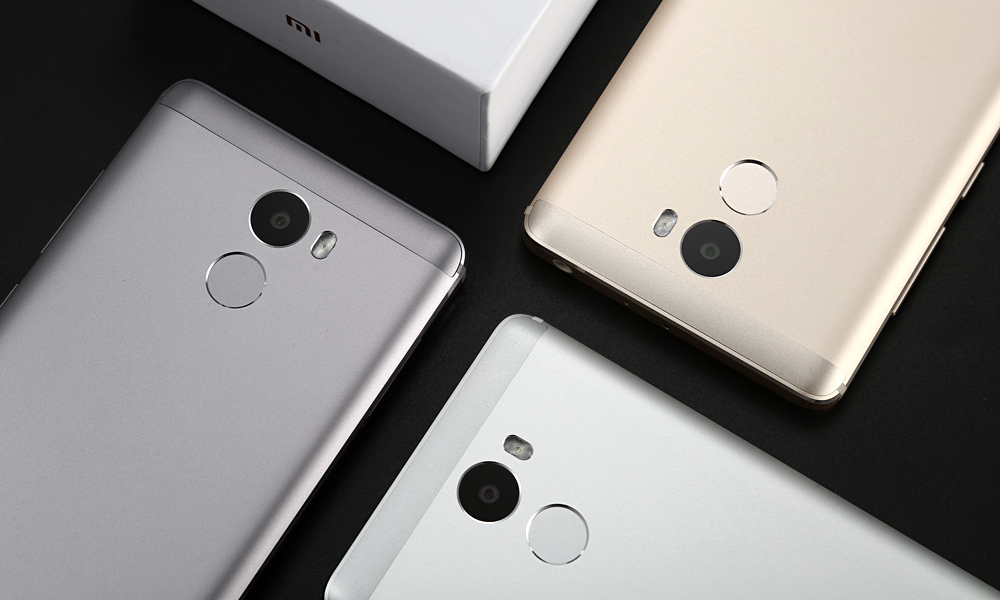
The main photomodules of smartphones are also almost the same, at 13 megapixels with phase detection autofocus. The only exception is that the Redmi 4X has a f / 2.0 aperture, but a single flash, and the Redmi 4 has f / 2.2, which is slightly worse, but it has a double flash. It can be assumed that in difficult lighting conditions, it is 4X that will perform better. On the front sensors, everything is identical, both at 5 megapixels, f / 2.2 with 1080p recording.
Autonomy
Smartphone batteries have the same capacity, 4,100 mAh. For owners of energy efficient processors and compact HD displays, this is almost a record figure. In both cases, you can count on at least two days of use without recharging.
Conclusion
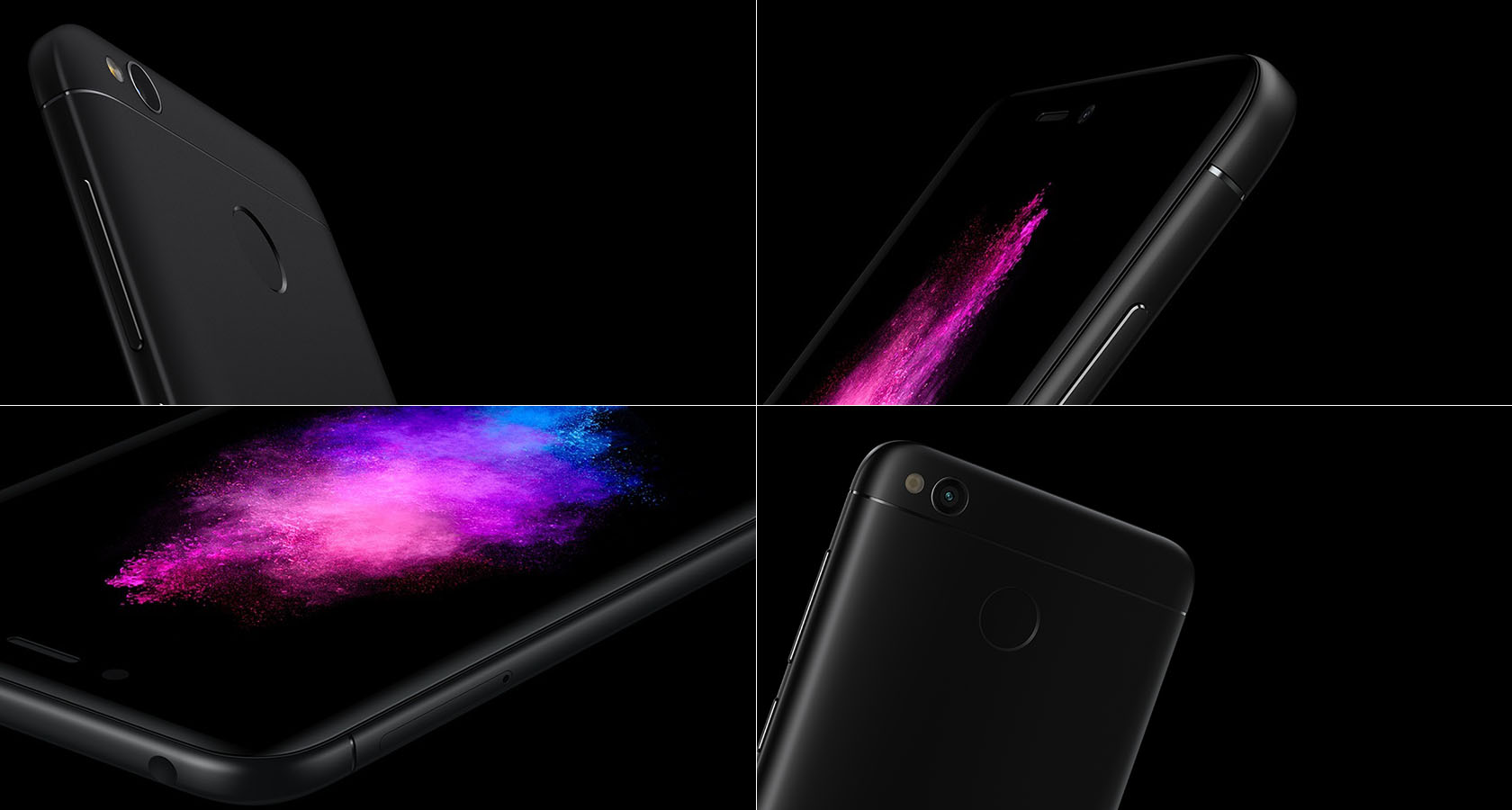
The bottom line for these two devices is very simple: when choosing between Xiaomi Redmi 4X and Xiaomi Redmi 4, you should focus only on the design and the amount of memory. The rest of the models are identical. Someone will like the rounder 4X, who will also like the slightly more strict Redmi 4. The latter in the official retail costs 500 rubles cheaper, 12,500 against 13,000 rubles for the Redmi 4X. If you buy them abroad, prices are reduced by about one and a half times, which makes smartphones much more attractive.
Comparison Xiaomi phones Redmi 4 for the average buyer, far from the intricacies of a smartphone-like structure, can be a daunting task. Yes, some differences are striking, but many nuances remain out of sight. So that you can do the most right choice, Five-Inches editors have prepared a comparative review of the Redmi 4 line of phones in terms of key characteristics.
In order not to completely confuse the reader, we have divided the material into several blocks. First, let's compare Redmi 4 and Redmi 4 Prime in terms of hardware specs. After that, let's compare Redmi 4 with Redmi 4a and Redmi 4x. Then let's move on to the display, talk about the battery, and finish the comparative review with the camera specifications.
Comparison of Xiaomi Redmi 4 and Redmi 4 Prime phones: hardware
The basic representative of the line is Xiaomi Redmi 4. The smartphone is built on the Snapdragon 430 chipset, which can be called a good, though not the best, choice for the budget segment.
The Snapdragon 430 is manufactured using a 28nm process, which automatically increases battery consumption and heat in heavy applications. Due to the outdated process technology, the clock speed is limited to a modest 1.4 GHz, which is very low by today's standards. You can forget about high numbers in benchmarks. Operating speed under normal conditions will be acceptable, but far from ideal. Much will depend on the number of running applications: if there are a lot of them, lags and slowdowns cannot be avoided.
Comparison of Redmi 4 and Redmi 4 Prime in terms of hardware demonstrates the clear superiority of the model with the Prime index. Despite the fact that the number of CPU cores is the same (eight), the processor itself in Redmi 4 Prime is of a qualitatively different level. Snapdragon 625 is manufactured using a 14 nm process technology; it is extremely energy efficient, runs at 2.0 GHz and barely gets warm in games. The performance in the benchmarks is quite high; even a dozen running applications will not affect the smoothness of the phone.
Now about the graphics and games. The Redmi 4 smartphone has the Adreno 505 graphics accelerator, which is slightly inferior to the Adreno 506 graphics adapter installed in the Redmi 4 Prime. However, due to the difference in clock speed, the Redmi 4 Prime will be faster compared to the Redmi 4.
The frame rate in games will be high even at maximum settings, and at medium and minimum settings, any toy will go with a bang. We add that thanks to the delicate technical process, you don't have to worry about throttling, that is, overheating of the chipset and a decrease in clock frequency under load. Of the entire Redmi 4 line, it is Prime that can be safely called the best smartphone for gamers.
Another important difference is the amount of RAM. In the phone Xiaomi Redmi 4 Prime RAM 3 GB, while the basic version got only 2 GB random access memory. The difference is fundamental, because the amount of memory directly affects the speed of the smartphone. Once again, the comparison does not end in favor of Redmi 4.
The last argument is the amount of persistent memory. In Redmi 4 Prime 32 GB internal memory, and in Redmi 4 - only 16 GB. It should be borne in mind that 6-7 GB is occupied by an operating system with firmware, and the user will eventually have about 10 GB. Not enough by modern standards.
Redmi 4 vs Redmi 4a comparison
Xiaomi Redmi 4 Prime works on hardware of a qualitatively different level, we have decided on this. In terms of hardware potential, the Redmi 4 Prime is better, and much better. Do not be surprised that this version is more expensive than others - the difference in price is fully justified.
Now let's compare Redmi 4 and Redmi 4a. As you can see from the table, both representatives of the Redmi 4 line are built on the Snapdragon 400 series chipsets. Chipsets are manufactured according to standards 28 nm technical process and operate at a clock frequency 1.4 GHz... They are neither too economical nor too fast. The heat can be decent, especially if you want to play 3D games.
The key differences when comparing Redmi 4 and Redmi 4a are seen in the number of cores and the type of graphics accelerator. The model with the index A is built on the Snapdragon 425 processor - frankly weak 4-core processor which got a weak graphics adapter as a partner Adreno 308. Moreover, even RAM LPDDR3 runs here at a lower clock speed (667 MHz).
If Redmi 4 can be called budget smartphone then Redmi 4A is an "ultra-budget". The phone is only suitable for the simplest tasks. It will be difficult for him to cope even with Twitter and apps. social networks which create a serious load and consume a lot of RAM. 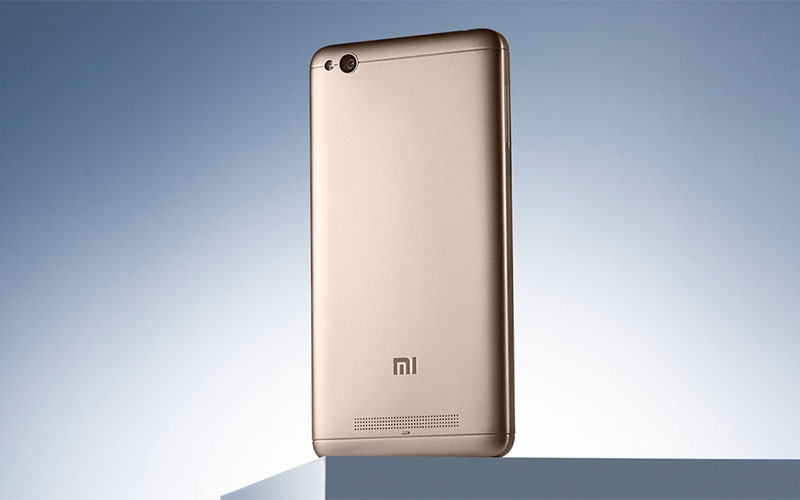
The next disadvantage of the Redmi 4a is the battery capacity 3120 mAh, while the rest of the lineup received 4100 mAh. Of course, a 4-core processor consumes less energy than an 8-core processor, but such a reshuffle does not benefit the phone. Another proof that we have an ultra-budget device, the main advantage of which is the availability of a complete set with 32 GB internal memory.
Redmi 4 vs Redmi 4x comparison
Xiaomi Redmi 4x was presented at the beginning of 2017. The phone is a slightly improved version of Redmi 4. We see qualitative changes in the amount of RAM and internal memory, more precisely, in the ability to purchase a complete set for 3/32 GB... Previously, there was no such opportunity: you had to choose either Redmi 4 (2/16 GB), or the more expensive Redmi 4 Prime (3/32 GB), or the frankly weak Redmi 4a.
Comparison of Redmi 4 and Redmi 4x in terms of the processor does not promise a qualitative breakthrough in performance. The Snapdragon 435 processor has the same clock speeds (1.4 GHz), the same architecture of the Cortex A53 cores and the former Adreno 505 graphics accelerator. The key difference between the S435 and the Snapdragon 430 is in the LTE modem category. Given the lack of high-quality 4G coverage in our latitudes, this can be ignored. Nevertheless, an increase in the speed of work can be obtained by bundling with 3 GB random access memory. 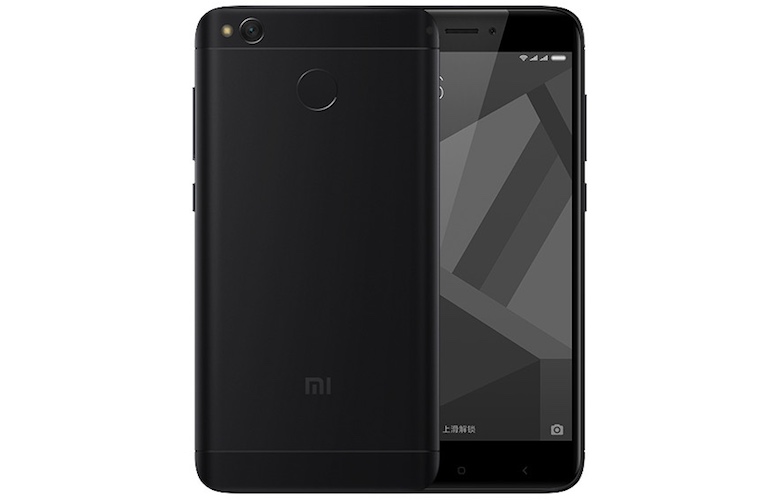
Comparison of Xiaomi Redmi 4 phones: display
Comparing Xiaomi Redmi 4 phones by other parameters is much easier. All four received an IPS display with a diagonal 5 inches... Standard Resolution - 1280 x 720 pixels, pixel density - 269 ppi. Full HD resolution only for Xiaomi Redmi 4 Prime. It also has a higher pixel density - 441 ppi. Once again, we state that Redmi 4 Prime wins in comparison with other representatives of the line.
Comparison of Xiaomi Redmi 4 phones: battery
The power system of Xiaomi Redmi 4 phones is built on a battery with a capacity 4100 mAh... This battery capacity is enough for a 5-inch smartphone to survive an eventful day. With an active screen, they will hold a charge for about 15 hours (in games - about 7 hours), and with economical use, they will work from a single charge for 3-4 days.
The Redmi 4 Prime is a leader in terms of autonomy thanks to a thin 14 nm processor technology. But Redmi 4a is again at a disadvantage: he only got a battery with a capacity 3120 mAh... If the operating time on a single charge has great importance, it is better to choose the basic variant of Redmi 4, Redmi 4 Prime or Redmi 4x.
Comparison of Xiaomi Redmi 4 phones: camera
When comparing the cameras of Redmi 4, Redmi 4x and Redmi 4 Prime, it is difficult to determine the winner. All phones have a main module with a resolution 13 megapixels, and the front camera is 5 megapixels... The aperture is slightly larger on the Redmi 4x, which allows you to expect better image quality in low light. Otherwise, we do not observe any qualitative differences.
Results of comparison of phones Xiaomi Redmi 4
Summing up the comparison of Xiaomi Redmi 4 phones. What conclusions can be drawn, it is already, in principle, clear, it remains to highlight and voice key features each model.
Redmi 4 Prime. In terms of specs, Redmi 4 Prime can compete with mid-range phones price segment... It has the best processor in the lineup and better display with Full resolution HD. Time autonomous work will be good due to the 14 nm process technology in combination with a 4100 mAh battery. Other compelling arguments in favor of the model include 3 GB of RAM and 32 GB of internal memory.
Redmi 4. The smartphone corresponds to the level of the budget segment. Of the shortcomings, we single out a small amount of memory - only 2 GB of RAM and 16 GB of storage.
Redmi 4a... An ultra-budget option that has more disadvantages than advantages. Pros - low cost and availability of a complete set with 32 GB of internal memory. The main disadvantages are an outdated 4-core processor with the same outdated graphics, slow LPDDR3 667 MHz RAM, 3120 mAh battery capacity. Another relative drawback is the plastic case (other models have a metal case).
Redmi 4x. Decent alternative the basic version of Redmi 4. Cosmetic updates to the chipset do not promise a noticeable increase in operating speed, but the presence of a configuration with 3/32 GB of memory already provides a comfortable advantage in comparison with Redmi 4. In comparison with Redmi 4 Prime, the Redmi 4x smartphone loses in terms of the chipset and display characteristics ...
That's all. We hope that the material turned out to be informative and useful. If we missed something, if there are inaccuracies and errors in the article, write in the comments, we will fix it. Stay with us, we are always glad to see you on the pages of Five-Inches!
Watch the latest video on our YouTube channel:
Xiaomi in 2017 already has four smartphones from the budget line of Redmi, these are: Redmi 4A, 4 / 4Pro and the recently announced Redmi 4X. In this article, we will compare all four modifications and answer the question: which Redmi 4 is better and which one is worth buying this year.
Design and arrangement of elements
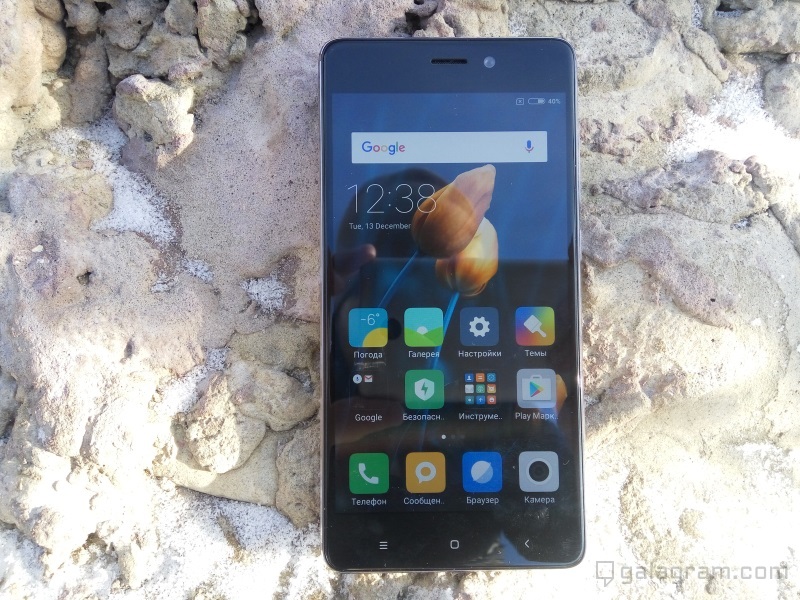
Smartphones Redmi 4/4 Pro and 4X are equipped with metal cases, while the Redmi 4A comes in a plastic (high-quality polycarbonate) case, although it looks like an aluminum one. Among the available colors are the following:
- Redmi 4/4 Pro: gray, silver and gold
- Redmi 4A: gold and rose gold
- Redmi 4X: Gold, Pink and Black
One of the key differences in the layout of smartphones is the main speaker. In all modifications, it is on the bottom edge (this is convenient and the call is audible), only for Redmi 4A the speaker is still located on the back edge and often overlaps. Also, the 4A does not have a fingerprint scanner when its three competitors have it and are on back cover... Using the scanner in Redmi 4 / 4X / 4 Pro, you can not only block the smartphone itself, but also close it to your fingerprint separate applications and phone functions from strangers.
Comparison of dimensions and weight
| Dimensions (edit) | The weight | |
| Redmi 4A | 139.9 x 70.4 x 8.5 mm | 131.5 gram |
| Redmi 4 | 141.3 x 69.6 x 8.9 mm | 156 gram |
| Redmi 4X | 139.24 x 69.96 x 8.65 mm | 150 grams |
| Redmi 4 Pro | 141.3 x 69.6 x 8.9 mm | 156 gram |
Hardware platform and performance

If on the outside all phones from the Redmi line are similar, then on the inside they differ dramatically. All four configurations are equipped with processors from Qualcomm and offer good performance and battery life for their price segment.
Comparison of processors and memory Redmi 4A / 4 / 4X / 4 Pro
| CPU | Memory | |
| Redmi 4A | Snapdragon 425, 1.4 GHz per core, Adreno 308 graphics | 2/16 GB |
| Redmi 4 | Snapdragon 430, 1.4 GHz per core, Adreno 505 graphics | 2/16 GB |
| Redmi 4X | Snapdragon 435, 1.4 GHz per core, Adreno 505 graphics | 2/16 GB or 3/32 GB |
| Redmi 4 Pro | Snapdragon 625, 2.0 GHz per core, Adreno 506 graphics | 3/32 GB |
All 4 modifications of smartphones have a hybrid SIM-tray with support for microSD memory cards up to 128 GB. The most powerful in the lineup is the Redmi 4 Pro with Snapdragon 625 processor and Adreno 506 graphics system, followed by Redmi 4X with Snapdragon 435 chip clocked at 1.4 GHz, followed by the base version Redmi 4 with SD430 and Redmi 4A with Snapdragon 425 ...
How many people are typing in AnTuTu
- Redmi 4 - 42.746 points
- Redmi 4 Pro - 42.989 points
- Redmi 4A - 36.127 points
- Redmi 4X - about 41,000 points
Displays
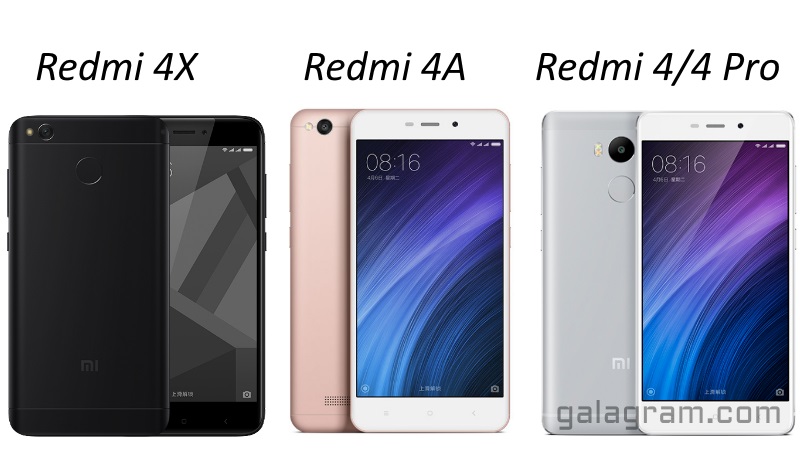
The diagonal of all compared smartphones is the same and is 5.0 inches. But the resolution varies, Redmi 4 Pro has an FHD matrix with a resolution of 1920 × 1080 pixels and a pixel density per square inch of 441 ppi. All other three models received HD displays with a resolution of 1280 × 720p and 293 ppi. It is also worth noting another difference between them, all versions of Redmi 4, with the exception of Redmi 4A, have a protective glass with 2.5D rounding along the edges of the display.
Cameras
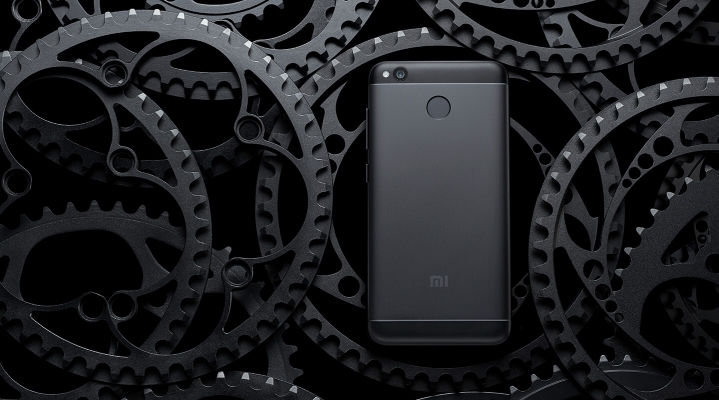
The camera is clearly not the trump card of Xiaomi's budget line of Redmi. But you can still shoot something on a smartphone. All monitored versions have almost the same modules of the main and front camera, their differences are shown in the table below.
Wireless interfaces
All four smartphones have 2G, 3G and 4G LTE communication modules. As for SIM cards, the phones come with hybrid SIM trays for Micro and Nano SIM cards, and also support microSD card memory instead of one operator Micro SIM card... All 4 more configurations of smartphones offer wireless modules Wi-Fi, Bluetooth and GPS / GLONASS for navigation.
Batteries and firmware
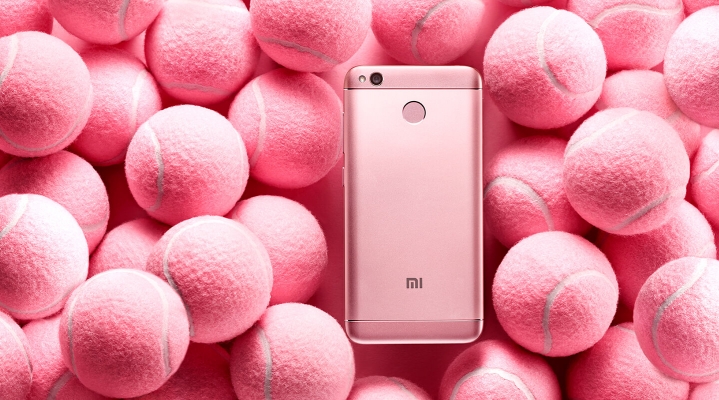
Redmi 4, 4 Pro and 4X receive non-removable powerful 4100 mAh lithium-polymer batteries with micro charging USB port... But Redmi 4A has the most modest battery among competitors, only 3120 mAh, its battery is also non-removable and charging takes place via a micro USB port on the bottom edge of the case.
All 4 smartphones run their own operating room MIUI systems 8 from Xiaomi, which in turn is the main one based on the OS Google android 6.0 Marshmallow. And of course, they will all get the MIUI 9 update this summer.
Smartphone prices
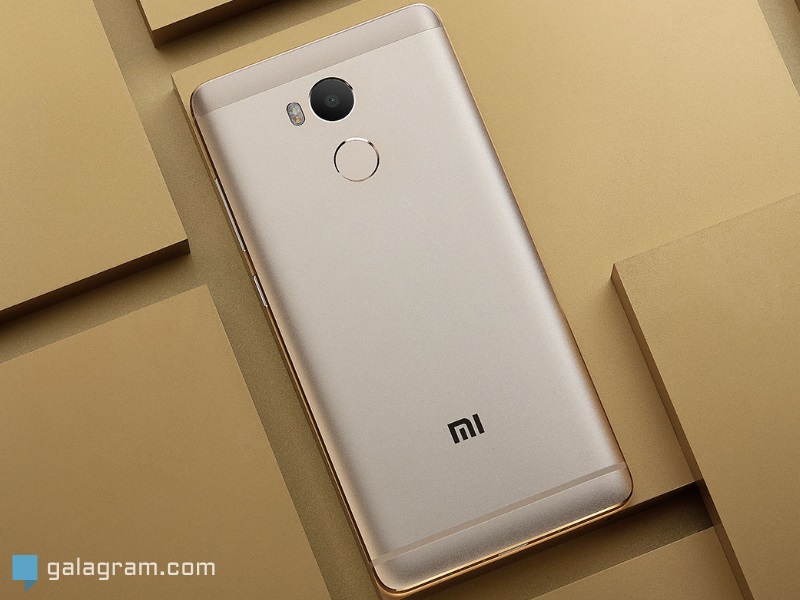
As you could replace, the most affordable smartphone is the Redmi 4A with specs entry level... It is followed by the basic version Redmi 4 (2/16 GB), followed by the REdmi 4X and Redmi 4 Pro. It is also worth recalling that in Chinese stores, new items can be purchased a little more expensive than from the official Mi website. For accuracy, we compared the official prices for smartphones that were announced by the manufacturer.
Comparison of official prices
- Redmi 4A (2/16 GB) - $ 74
- Redmi 4X (2/16 GB) - $ 102
- Redmi 4 (2/16 GB) - $ 103
- Redmi 4X (3/32 GB) - $ 130
- Redmi 4 Pro (3/32 GB) - $ 132
Conclusions: which Redmi to buy
Galagram recommends buying model Redmi 4 Pro, since in terms of performance this is the most powerful smartphone among all 4 configurations. At the same time, its price does not differ much from the cost of Redmi 4X (3/32 GB), but the Snapdragon 625 processor shows better results than the Snapdragon 435.
If you choose a smartphone in the range of $ 100-115, then you should pay attention to the Redmi 4X with 2/16 GB of memory on board. In terms of the set of parameters, it is better, the basic version of Redmi 4 with 2/16 GB of memory, and its SD 435 processor is clearly more powerful and more efficient than the SoC Snapdragon 425.
- Redmi 4A -














